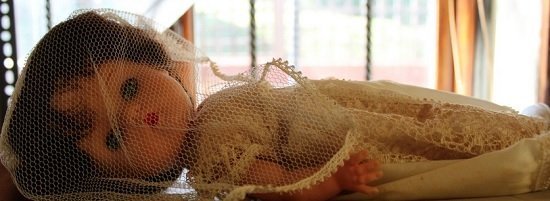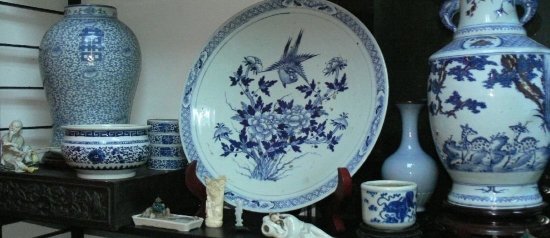Many would not be aware that like the Buddhism of Tibet, Mongolian Buddhism shares the same articles of faith and the same mystic means of expression. Like the Tibetans, the Mongolians celebrated their religious life through exquisite paintings, magnificent sculptures in bronze, wood and clay. They also constructed lavish temples decorated with silks, silver, gold, coral and pearls as expressions of the pomp and display of temple rituals.
Even though they are geographically separated by desert and mountain they are linked by faith. The roots of Mongolian Buddhism are firmly embedded in Tibetan soil. The beginnings of the relationship date back to before the thirteenth century, when the Mongol people came to be ruled by Chinggis [Genghis Khan] (c. 1162-1227) and his grandson Kubilai Khan (1214-1294), who between them and their successors built an empire that extended from China through to Iran and Russia.
The course of Buddhism through the Mongol nation was a torturous one and it was not until the sixteenth century that Mongolia once again became Buddhist following the Gelugpa (new, reformed version of Tibetan Buddhism – Yellow Hat sect). The turning point occurred in the course of the Tmed campaigns (1566-73). Directed by Altan Khan the battles against Tibet resulted in contact with Tibetan monks. The portentous meeting between Sonam Gyatso (1543-1588)1 the Third Dalai Lama and Altan Khan whom he immediately recognised as the incarnation of Kubilai Khan resulted in Mongolia becoming a Buddhism nation.
Mongolia was a devoutly Buddhist nation until the Communist take-overs, first in Russia (Outer Mongolia and Transbaikalia) in 1917 and then China (Inner Mongolia) in 1949. The monasteries were the repositories of rare Buddhist artistic and literary treasures, with texts in both Tibetan and Mongolian. They were also great centres of education, literature and medicine and the scene of large gatherings on festivals and holy days. In addition, almost every Mongol ger (yurt) had its own portable household altar, and each man, woman and child in Mongolia carried around small amulets and paintings of their personal deities; these works were of a greater or lesser degree of artistic merit, depending upon the wealth of the bearer.
When the Russian and Chinese Communists declared war on religion, wholesale destruction and confiscation of anything to do with spiritual faith, be it building, statue, painting or text, took place on a massive scale. Those few artefacts which miraculously escaped the fires of fanaticism are all the more poignant as reminders of what has gone.
One such survivor is the thangka painting illustrated here which dates from the nineteenth century. The word thangka derives from the word thang meaning a flat plain – thus a thangka is literally a painting on a flat surface, but uniquely designed and executed so that it can be rolled up between silken covers and only displayed when required. The essence of the entire teachings of the Buddha come to life in these paintings, and it is believed that even to look upon one of these pictures offers the opportunity to perceive the wisdom of the teachings.
As an object of deep spiritual merit, the thangka required a good deal of care in its preparation. The artist had to be of good character and clean in both mind and body, and may even have had to abstain from meat, alcohol and sexual relations, and possibly from such food as onions and garlic, during the time in which he was working on the painting. The artist’s room had to be ritually cleaned and prepared, and his painting equipment including brushes, canvas and tools were made ready by invoking the appropriate deities.
Avalokitesvara was called upon for compassion, Vajrapani for power and Manjusri was summoned for the wisdom to go about the task and achieve the spiritual perfection needed to pay homage to the image about to be created. In some cases the artist had to be initiated by a qualified lama into the specific cycle of teachings to which his subject related, and at the very least he entered into a state of meditation to empty and purify his mind.
Within a flaming nimbus, Begtse stands in the ‘militant archer’ pose upon a sun disc supported by a lotus pedestal. Brandishing his scorpion-handled flaming sword – executed in burnished copper – he tramples upon the corpses of humans and horses which lie prostrate on his sun disc. The sword is for slashing those who break their vows, and the other hand holds the wrenched-out heart of the enemies of the faith.
Begtse wears a crown of five skulls, his armour is of copper and he wears a swirling garment of delicately patterned red silk, while the skin of a sea monster dangles from his waist. He wears fantastical makara-headed boots and is girdled by a garland of severed human heads. A bow and arrow, as well as a leather banner with an impaled human head are held in the crook of his arm. His countenance is red and angry, his three eyes glaring wildly; he is bearded and moustached, with flaming brows and flying hair. His open mouth has bared fangs and his tongue moves wildly. He rides in a swirling sea of blood and to his left, within a flaming aureole, is the Red Master of Life, Leken Marpo, charging on his mad blue wolf as he holds a spear aloft with one hand, while the other yanks a noose which drags along an enemy of the faith.
To the right is his sister/consort Rikpay Lhamo, or Red Faced One, who has a naked blue body with pendulous breasts and a red face. Her body is adorned with swags of bone ornaments and she raises her copper sword against the enemies of the faith and with the other hand brandishes a purbha or ritual dagger. She straddles a bear, which is chewing casually on a corpse, a look of contentment in its eyes as it strolls through the blue flaming nimbus.
Immediately to the front of his lotus pedestal are the offerings to Begtse contained in three skull cups (kepala). In the centre is the traditional baling sacrifice which, while made of barley flour mixed with water, represents the ‘flesh and blood’ sacrifice of a human hand, foot, eyeballs, nose, ears tongue and brain: these represent the enemies and obstacles to the faith which are being brought before Begtse for retribution.
To complete the rituals in which this baling sacrifice is used, the barley and water dough is taken and burned behind the monastery walls. Below these are offerings representing the ‘three jewels’ of Buddhism and a branch of coral.
The gruesome and fierce appearances of deities such as Begtse serve a specific function in Buddhism. Our first response is an emotional one – fear – but the real purpose of these figures is to illustrate the fierce determination and strength which is necessary to overcome obstacles and defeat the enemies of the Buddhist teachings. For Westerners, one of the surprising things about Buddhism is that all the teachings are positive in nature, and negative elements are things to be overcome. The grim ferocity of the wrathful deities is an illustration of the concept of fighting fire with fire.
The landscape surrounding the figures in this painting is most interesting. The extremely fine and detailed rendering of the deities is characteristic of the best of Mongolian painting, as are the colours used to depict them. The landscape represented, however, is not the flat, grassy steppes of Mongolia, nor the low mossy hills of the Buriyata Taiga with its plentiful water. Rather what has been painted following the dreamlike blue/green palette of the Eastern Tibetan School are the jagged, tree-covered mountains of Labrang in the former Amdo Province of Eastern Tibet (now in Gansu Province in China). As a final reverent touch to this marvellous painting, the reverse side of each of the deities bears a small blessing in Tibetan Script. We are lucky to still have this beautiful thangka painting.




